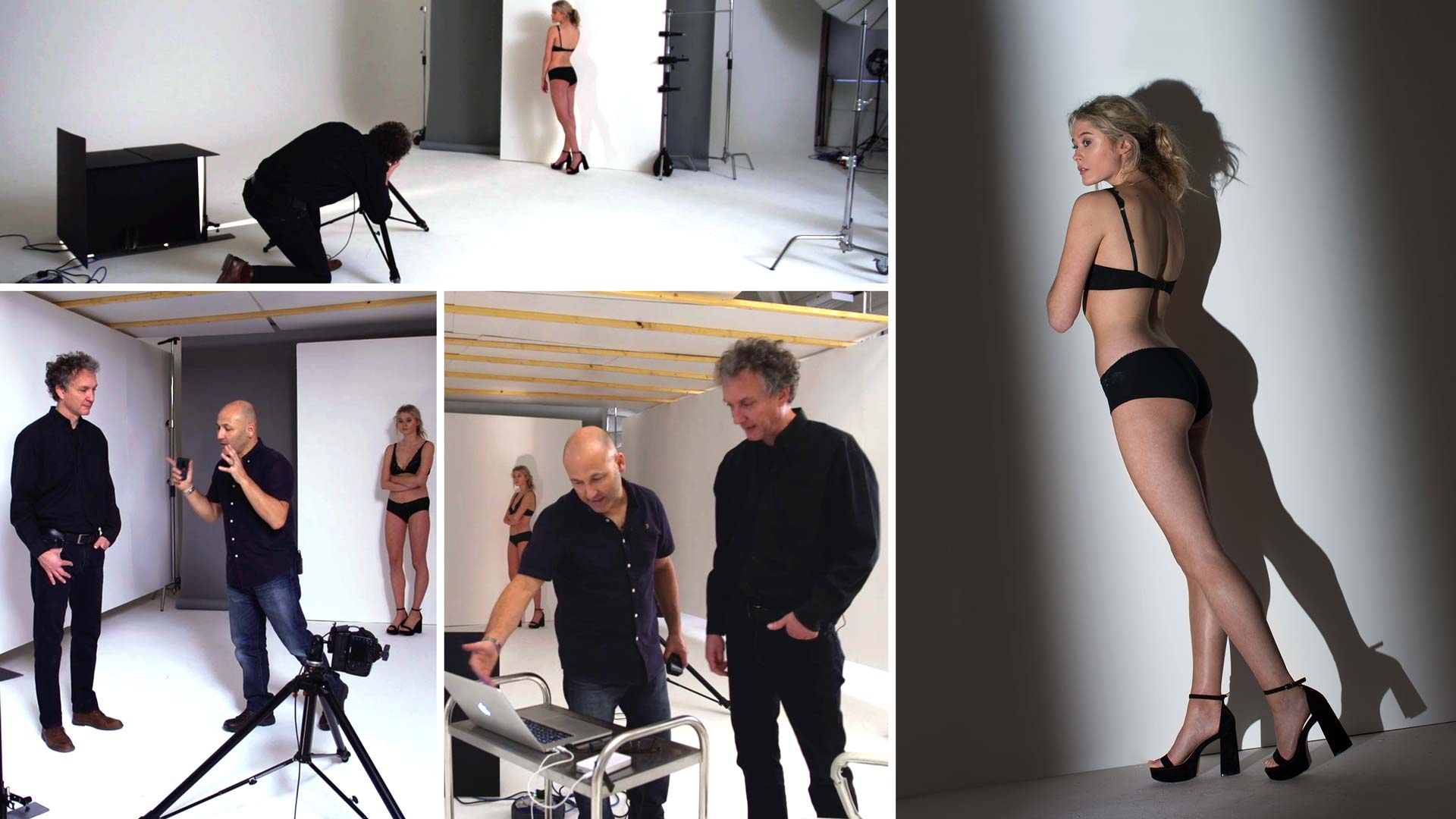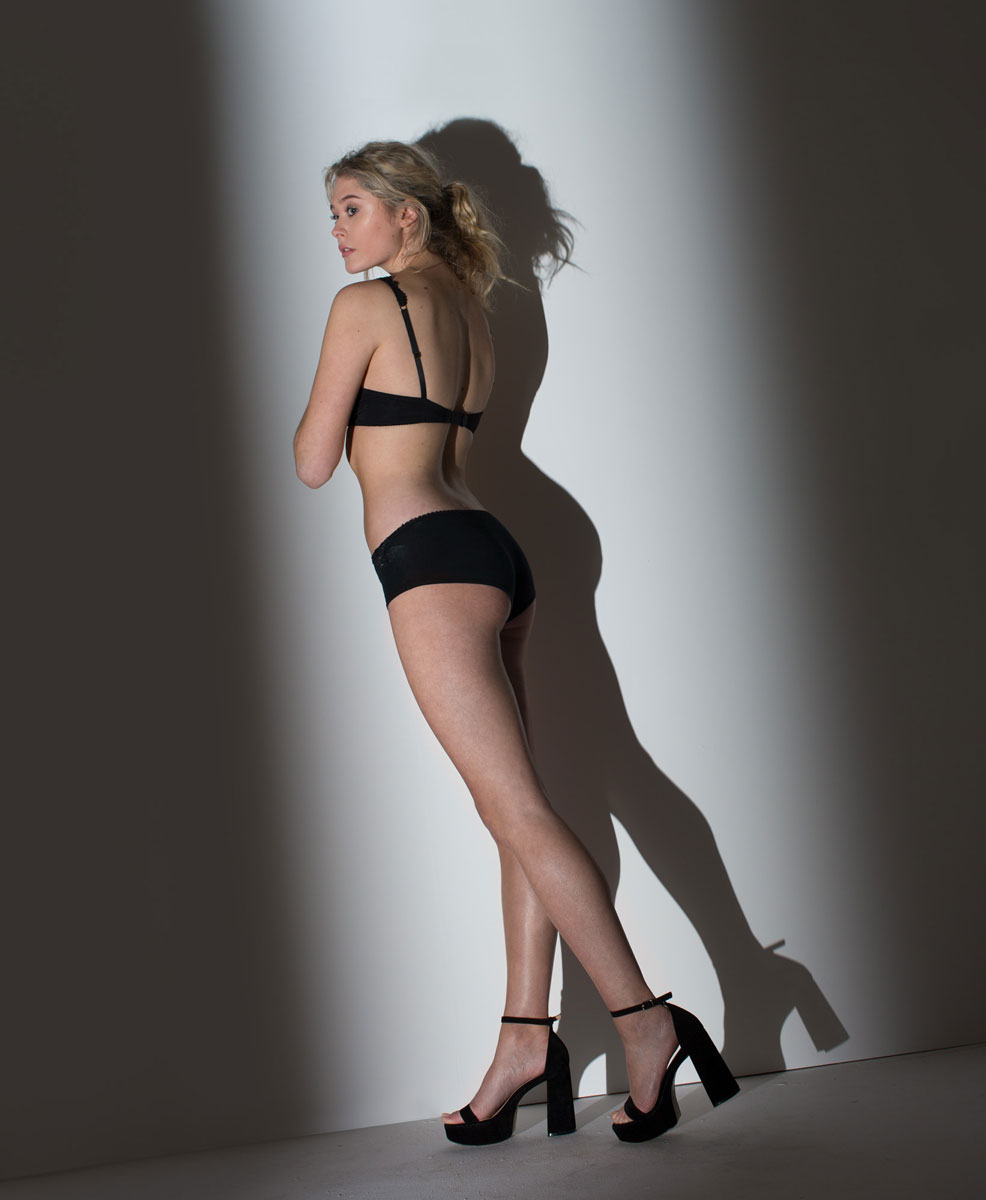Dramatic Single-Light Portrait With Harsh Shadows
Dynamic and dramatic, with a stunning silhouette – and all with just one light.
For this dramatic lighting setup, Karl and Urs deviate from the normal conventions of portrait photography as they set out to achieve a full-length portrait using a single light source.
Using a single, bare bulb from a low angle they show how it’s possible to execute precise control of a light with just a few simple accessories. Starting from the very beginning, the pair demonstrate each result as they tweak the shot until they reach the final, dramatic result below.
Starting in the large studio, they go on to demonstrate how the same results are perfectly achievable in a small studio too.
In this class:
- Creative portraiture using a single light
- How to create hard light using a single light source
- How to control shadows
- Shooting from a low angle and how to make it work
- Creating soft shadows with a hard light source
- Photographing in a small studio
- How to control light in a small studio
Questions? Please post them in the comments section below.



Comments
Why is the scene before a shot different from the resulting picture? At least, this is the way it is shown in this video. So, I can’t tell by the scene what the picture is going to be.
Ah, got it. Because of the flash. I have a continuous light soft-box, so haven’t got used to the the flash light.
Hopefully, a continuous light will give the same result. It is light, after all.
Hi, Karl,
Sure will, I was just having a nose around 🙂
Matt
Just joined the party today. What a great video, beautifully explained and well articulated. Excellent job guys.
Thank you Matthew. Although if possible try to watch from Chapter 1 in this section as I think there will still be interesting concepts that you will see along the way and I’ve designed most of the modules to work in sequence. All the best Karl.
One last question on this:
Url explained it but I didn’t understand what he said for the reasoning:
He added something to the front of the strobe, what was it and why?
Because thinking of recessed Profoto heads, I can either use the default recessed head OR I can add the Dome diffuser … But Urs added something hand made to the dome of the Siros..What was he trying to achieve there?
Thanks.
Hi Babak, was it the little piece of diffusion he added you are referring to? if so he added it just to diffuse the light a little to make it a tiny bit more even, the flash tube before any diffusion is a circular tube around the modelling light so would have been patchy but very minimally because no modifiers were being used
yep that was it. Thank you.
OMG! Will try it this weekend…
But one question: How did he decide on the “relative height” of the aperture flags around the light?
Hi Babak, just how we do for most stuff like this, hold a card there and look at the result! 🙂
Brilliant demonstration. Can you tell me, what are the gray color floor brackets you use to support the boards and other larger styrofoam light blocking panels I’ve seen in your other videos?
Hi Jonathan, I had these made at my local metal workshop to hold polyboards
Brilliant!
Your understanding of light and light/shadow control is impeccable. Thank you so much.
Hi Karl,
could this be achieved by using a Farnell Light and the use of the barn doors if I had a white walls/Floor studio like in the video? thank you
luciana
Hi Luciana, no it would need to be done in an enclosed box to stop the light bouncing around the studio.
do NASA call you when they have some issues with light physics :). thats totally mesmerising and honour to learn from you. thanks for cutting down the prices.
🙂
Yes, this is absolutely brilliant, I could actually see the light being shaped and controlled as if it were a liquid………. very exciting.
Thanks Gerry
The light is from below and it is still looking great.
Why is this case working ?
In this case it is a full length shot and not a close up portrait, she is also mostly in profile and the camera is also shooting from low. I wouldn’t recommend this lighting position for a conventional portrait for reasons explained in the ’emotion of light’ chapter.
This is absolutely brilliant.
What is the difference in effect between the 2 blackboards (Aperture) and a barn door??
Hi Ashraf, too much light spills out of the sides of the barn doors and due to the physics of light and casting a shadow the light needs to emanate from a point light source. With barn doors they would need to be attached to a standard reflector which stops it being a point light source. Also the further away the point light source is away from the aperture then the better the shadow will be. See chapter 17 of ‘Light Source’ for a further example.
Crazy..